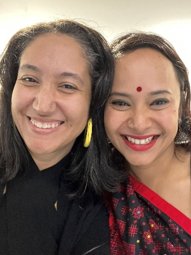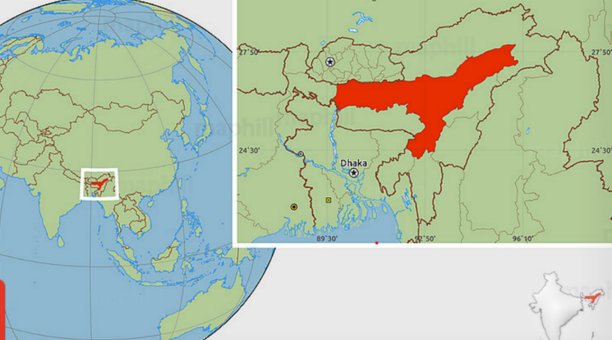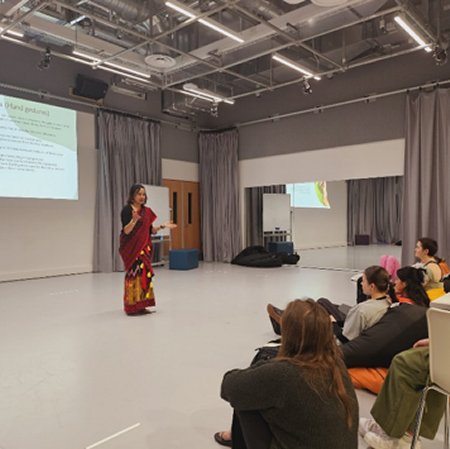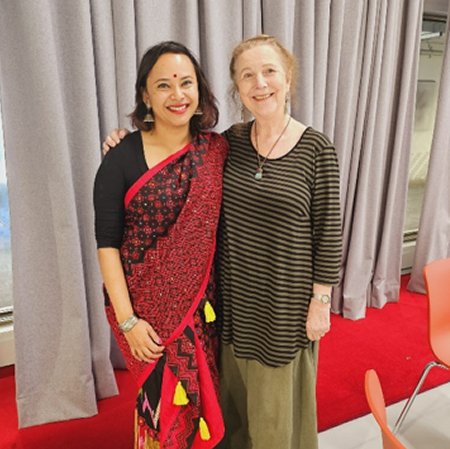
|
 |

|
 |
The connection is in the creativity, sustainable communities through Community based Arts - Serenity Wise e-mal: serenitish@yahoo.com July 11, 2024 Not many know it, but there is a lot of power in your local weekly community dance class. I have always been involved in some type of community-based arts group (mainly dance). After extensive opportunities to learn from dance groups around the world, I began to notice something beyond the specific dance activities at hand. There was something significant about the ability each group had to educate, inspire growth, and foster a sense of belonging amongst its participants. To better understand how arts groups do what they do, I began to research, starting through my own art form of choice, dance. I have since spent the last eight years exploring and researching the informal and formal ways that community dance groups operate, and how they do what they do. While there is an ample and increasing amount of literature about the benefits of community-based arts groups, there is less information available about how the groups create those benefits. To contribute to this aspect of the research, I regularly seek opportunities to connect with dancers, to learn about their groups and dance practices. Whenever possible, I invite them to speak to my classes of dance students, to share insight into their processes.  Antara Borkakoty, Director of Sattriya Dance Project and Serenity Wise, dance scholar/practitioner “This art form has a long history and culture, and I created this project to share with people of all backgrounds here in Aotearoa New Zealand”, says Antara Borkakoty, speaking to a group of my dance students at the University of Auckland. She then proceeds to answer their questions about her journey of self-reclamation and cultural education through Sattriya dance. After a long period (20 years) away from dance classes, Antara began learning Sattriya Nritya online under Adhyapika Meenakshi Medhi and is enrolled into a 7-years diploma course with Sangeet Sattra, Assam, India.  Antara Borkakoty, Director of Sattriya Dance Project explains Hastas to students in the University of Auckland Dance Studies programme As she delivers her presentation, her story weaves together the journey of this historic dance and Antara’s journey to becoming a dancer and emissary for Sattriya dance in Aotearoa New Zealand. Sattriya, like every Indian classical dance form, is a representation of the Assamese heritage and culture which has been preserved, popularized and practiced in the Sattra (sahapedia.org/sattras-assam, n.d.) monasteries for more than 550 years. It is a powerful medium for propagation of bhakti faith based on Bhagavat Puran among the masses of the 15th century Brahmaputra valley spearheaded by Vaishnava saint and social reformer Mahapurusha Srimanta Sankaradeva. It was first presented to the public eye in the play ChihnaYatra, a composite form of dance, music and drama by Srimanta Sankaradeva in 1468 A.D. Sankaradeva introduced this dance style in the form of dance drama called Ankia Nat and Bhaona, which is replete of music, drama and dance. After Sankaradeva’s demise in 1568 A.D., the latter apostolate and sattra residents skillfully adopted the pursuit of this dance form. Because of the artistic innovations of the maestros and Sattras, the scholars named this dance form as Sattriya.  maphill.com Antara’s decision to learn Sattriya came somewhat unexpectedly. As a civic and community engagement professional, Antara was inclined toward supporting arts and culture, but her busy schedule did not allow ample time for her own creative expression. Looking to make a little time for fun and recreation, she joined a leisure dance class. The class sparked an eagerness to develop her own creative practice. Simultaneously, Antara felt the time was right to connect more closely to her heritage. These two notions coalesced and she decided to begin her journey as a Sattriya dancer. Birthed from her experience as an emerging Sattriya dancer, Antara created the Sattriya Dance Project to educate people in Aotearoa New Zealand about Assamese art and culture. The Sattriya Dance Project emblemises many of the strengths of community dance. Through the practice of Sattriya, participants build relationships, develop a sense of belonging, experience a vocabulary of creative and physical expression, and learn about Assamese culture. The community-enriching benefits of offerings such as the Sattriya Dance Project go far beyond the confines of the classroom. As New Zealanders learn dance phrases, they also become better aware and connected to their Assamese neighbours who call Aotearoa New Zealand home. Conversely, Assamese New Zealanders get to enjoy their culture wholly, as their heritage is centred and celebrated as part of the home we share in Aotearoa New Zealand. The work of community arts and dance groups such as the Sattriya Project contributes to a greater sense of belonging and connection amongst all members of a society. These contributions have been recognized by the United Nations Division for Sustainable Development as critical to the social sustainability of neighbourhoods, towns, and countries (United Nations, 2024 Transforming Our World: The 2030 Agenda for Sustainable Development sdgs.un.org).   Left: Antara introducing Sattriya Nritya to the class Right: Antara with Dr. Barbara Snook - Research Fellow and Teaching Fellow at the University of Auckland' and 'Adjunct Professor in Cultural Studies at Tezpur University, Assam As the Sattriya Dance Project gains momentum, Antara and the project’s supporters hope to further develop ties with arts and culture keepers, researchers, and educators. The aim is to create opportunities for exchange between Assam and New Zealand, for the benefit of an evolving Aotearoa New Zealand and an equitable and sustainable world. Serenity Wise is a dance scholar/practitioner based in New Zealand. Post your comments Pl provide your name and email id along with your comment. All appropriate comments posted with name & email id in the blog will also be featured in the site. |